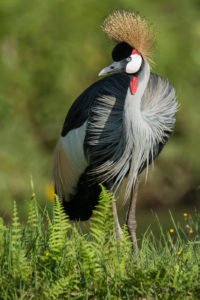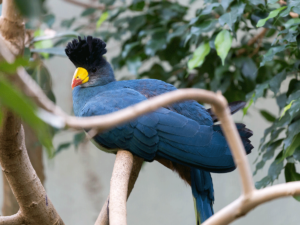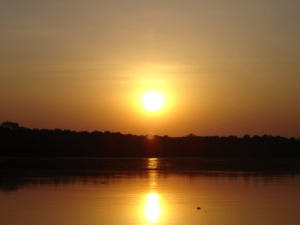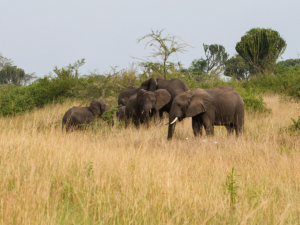Mt. Elgon is a massive solitary volcanic mountain on the border of eastern Uganda and western Kenya. Its vast form, eighty kilometers in diameter, rises 3070m above the surrounding plains, providing welcome relief in more than one sense of the word. Its mountainous terrain introduces variety to an otherwise monotonous regional landscape.
Its cool heights offer respite for humans from the hot plains below and its higher altitudes provide a refuge for flora and fauna.
Mt. Elgon has been a regional landmark for a long time: this extinct volcano is one of Uganda’s oldest physical features, first erupting around 20 million years ago. It was once Africa’s highest mountain, towering above Kilimanjaro’s 5895m. Millennia of erosion has reduced its height to 4321m, relegating it to the 4th highest peak in East Africa (and 7th on the continent). However, its 4000km2 surface area is still the largest base of any volcanic mountain worldwide.
Mt. Elgon is a hugely important water catchment. Its forests receive up to 3000mm of rain each year, which they store and release to support flora and fauna, and more than a million in Uganda. Elgon’s water is equally important to many Kenyans, for Mt. Elgon is bisected by the international boundary. The mountain’s natural vegetation and role as a giant biological sponge are protected by Mt. Elgon National Park on both sides of the border. The Uganda park, upgraded from a forest reserve in 1993, covers 1,110 km2 Though its Kenyan counterpart measures just 170 km2, it is adjoined by a forest reserve and a national reserve. These parks and reserves in both countries combine to form a transboundary conservation area covering 2,229 km2, which has been declared a Man & Biosphere Reserve under UNESCO.
Hikers are appreciating Mt. Elgon’s deserted moorlands. A climb on Mt. Elgon is to explore a magnificent and uncluttered mountain wilderness without the summit-oriented approach common to higher regional mountains. Indeed, the ultimate goal of reaching Mount Elgon’s top is not the final ascent to the 4321m Wagagai pear, but the descent into the vast 40km caldera.




